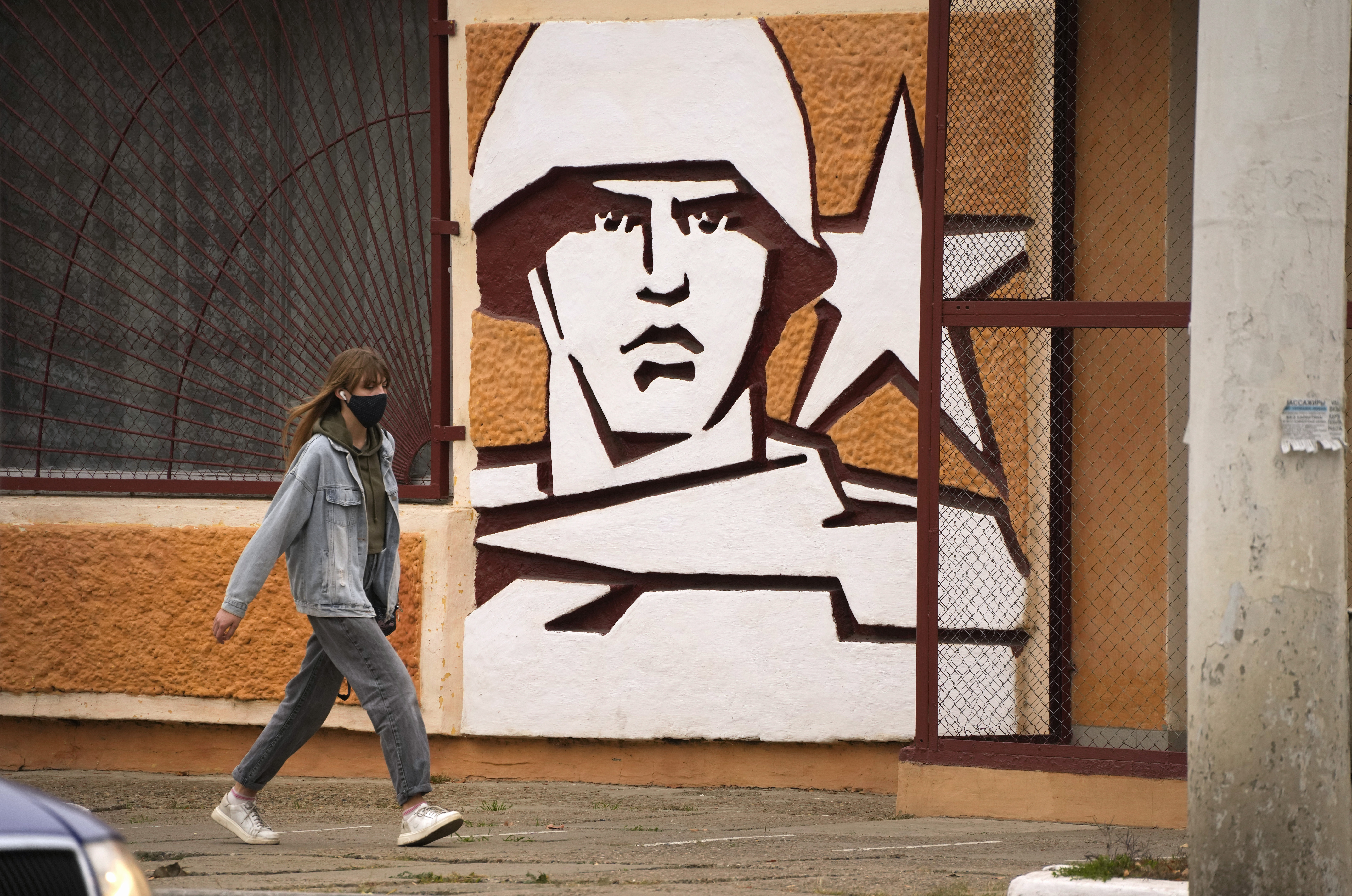
Like many people living near the border between Moldova and its breakaway region of Transnistria, also called Transdneistria, Victoria is worried.
A string of attacks this week in Transnistria – a separatist region of Moldova this is supported by Moscow – has sparked fears that Moldova could be dragged into conflict following Russia’s invasion of neighbouring Ukraine.
No one has claimed the attacks in Transnistria, and tensions are mounting.
“I don’t know what to do, I’ve never lived through a situation like this,” said Victoria, a 36-year-old medical assistant, who lives on the Moldovan side of the border, but crosses into Transnistria every day for work.
“If things change we will leave, obviously,” she said.
A narrow strip of land sandwiched between Moldova and Ukraine, the self-proclaimed republic of Transnistria seceded from Moldova in 1992 after a brief war. Approximately 1,500 Russian soldiers have been based there ever since, and Russia’s invasion of Ukraine has brought unwelcome echoes of the fighting in Moldova in the early 1990s.

Conflict appeared to be returning once again to the borders of this breakaway territory and its population of some 500,000.
Transnistria’s interior ministry said on Monday that government buildings in the capital Tiraspol were hit by what appeared to be a grenade-launcher attack.
In the following days, the ministry said a radio tower re-broadcasting Russian stations near the Ukrainian border was also hit by explosions. Shots were also reportedly fired at a village housing a Russian arms depot after drones flew over from Ukraine.
Escalation
Russia has said it is “alarmed by the escalation of tensions in Transnistria”, and has condemned the incidents as “acts of terrorism”.
Since the attacks, the wait to cross into the separatist region from Moldova has become much longer as security is ramped up, according to Moldovan policeman Vitalie, who gave only one name.
Transnistrian authorities are conducting “more extensive checks since the explosions”, he said, adding that car queues stretch to 300 metres at times. At the Moldovan checkpoint a few kilometres away, security forces are simply waving people through.
In the wake of this week’s incident in Transnistria, Ukraine has accused Russia of playing a part in trying to “destabilise” the breakaway region in Moldova.
The possibility of direct Russian interference has been downplayed by Moldova’s Deputy Prime Minister Oleg Serebrian.
He told France Info radio the cause of the clashes was “not clear”, citing possible “internal clashes” between pro-Ukrainian and pro-Russian factions in Transnistria rather than “external influence”.
But Serebrian admitted it was “concerning, given the regional situation and [Moldova’s] economic weakness”.
Moldova is “very dependent on electricity and gas networks that cross Transnistria”, he said.
Moscow’s sphere of influence
Russia does not officially recognise Transnistria as an independent country, but the region has retained its independence today thanks largely to military support provided by the Russian army, the University of South Florida’s Tatsiana Kulakevich wrote recently.
“Transnistria has close ties to Russia. People living there are largely Russian speakers and the government is run by pro-Russian separatists. Russia also provides Transnistria with free natural gas and has supported older people in the region with pension supplements,” Kulakevich wrote in The Conversation.
Added to that, Russia wants to keep Moldova, previously a part of the Soviet Union, within Moscow’s sphere of influence.

In March, Moldova applied for European Union membership. However, the presence of Russian troops in Transnistria prevented Moldova from fully controlling its own borders, and one of the conditions for EU membership is territorial and border control, Kulakevich notes.
The Ukraine war and the presence of Russian troops in Transnistria has made Moldovans and some international experts worried that Russia could attack Moldova next.
“On paper, Transnistria looks like an ideal place for Russia to easily launch attacks on Ukraine or Moldova,” Kulakevich says.
However, Transnistria on its own does not have much capacity to fight against Ukraine, and for the Russian military to reach Transnistria, it would require massive gains to be made in southern areas of Ukraine, where Russian forces have made only limited advances.
Galina Turcanu, who owned a small family business that operated on both sides of the border, said nerves are on edge.
“I’m concerned, we’re all concerned,” the 46-year-old Moldovan said.
But she was staying put – for now.
“We have our parents and our whole family here,” she said.
“We will stay and see which way the wind is blowing.”
And if the wind changes?
“I’ve got all the passports in there”, she said with a smile, pointing to a bag in the passenger seat of her car.







